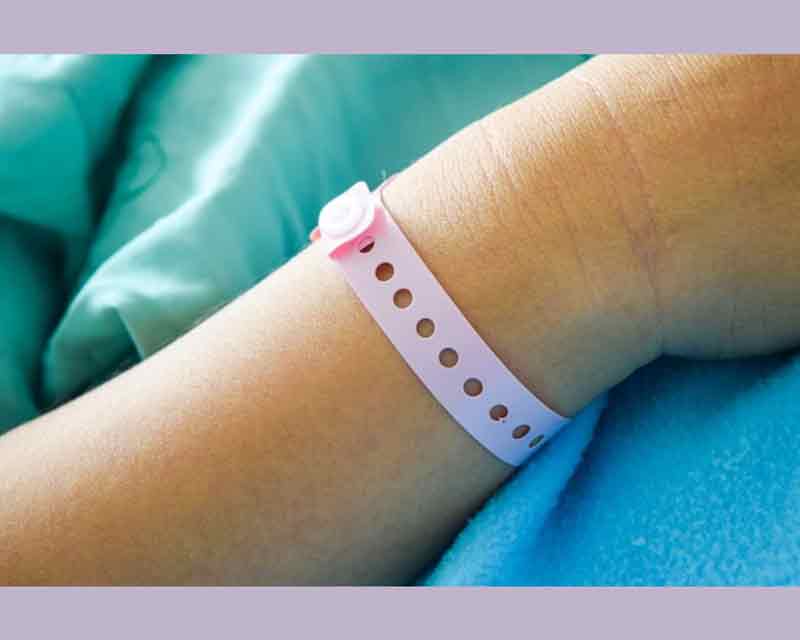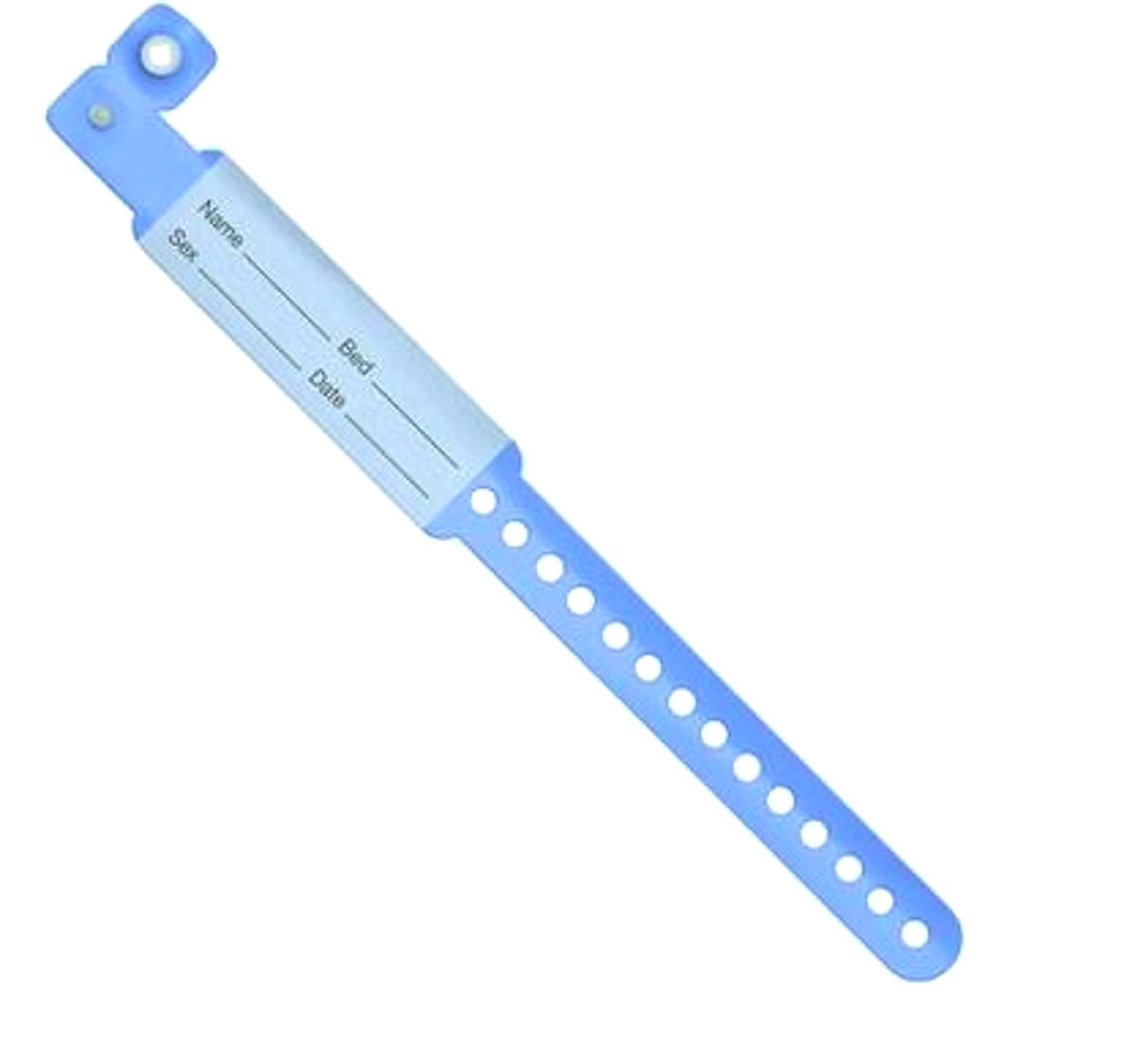How a Patient Identification Band Can Help Prevent Patient Misidentification in Healthcare Settings
Wiki Article
Discovering the Numerous Kinds Of Patient Identification Band Used in Medical Facilities
In the elaborate globe of medical care, the essential role of Patient Identification bands typically goes undetected. These bands, differing from straightforward paper wristbands to innovative RFID bands, create the foundation of Patient security methods, ensuring precision in Patient Identification. The vast variety of these bands, each with its unique advantages and limitations, is commonly overlooked. As we browse via this topic, one may obtain insight into the refined intricacies and important significance of such bands in medical facilities.Comprehending the Relevance of Patient Identification Bands
While they might feel like mere accessories, Patient Identification bands play a vital role in medical centers. These bands work as a crucial device for validating Patient identity, avoiding clinical mistakes associated with misidentification. The bands typically show necessary details such as the Patient's name, age, blood type, and any kind of well-known allergic reactions. They allow healthcare experts to swiftly access this essential details, thereby helping with precise and timely medical treatment. Patient Identification bands also aid in improving administrative tasks, guaranteeing accurate record-keeping and billing. Despite their simplicity, these bands embody the principle of Patient safety and security, a keystone of top quality healthcare. Without them, the danger of medical errors, and consequently, Patient injury, could dramatically boost.Typical Paper Wristbands: Their Usage and Limitations
Conventional paper wristbands have been a staple in Patient Identification across numerous medical facilities. While their use is extensive, they harbor particular restrictions that may influence their efficiency in Patient monitoring. This section will certainly concentrate on the extent of their application and the intrinsic drawbacks connected with their use.
Paper Wristbands: Use Range
In the realm of Patient Identification, paper wristbands have long held an important duty. These bands are commonly used in outpatient settings, where the Patient's stay is short-term. In spite of improvements in modern technology, the modest paper wristband continues to be a cost-efficient and reliable solution for Patient Identification in numerous medical care circumstances.Limitations of Paper Wristbands
Regardless of their prevalent use, paper wristbands are not without their disadvantages. Their physical toughness is among the considerable restrictions. Exposure to water, sweat, or rough handling can render them unreadable and even trigger them to break down. In addition, paper wristbands frequently lack the technical capacities of even more contemporary alternatives, such as barcoding or RFID chips, restricting their capability to simply showing composed details. The failure to update or modify the information on the wristband is another drawback. If the info is handwritten, readability can be jeopardized, leading to potential misidentification. Paper wristbands can trigger discomfort or skin irritability to some clients, specifically when used for extended durations.Barcoded Wristbands: Improvements in Patient Identification
While Patient Identification has long been an important element of health care, the development of barcoded wristbands symbolizes a substantial jump onward. These bands leverage the simplicity of barcoding modern technology, permitting for Patient details to be swiftly checked and accessed. They improve the speed and accuracy of Patient Identification, minimizing the danger of clinical errors connected to misidentification.Radio Regularity Identification (RFID) Bands: a Step In The Direction Of Futuristic Health Care
The development of Patient Identification bands has produced the emergence of Superhigh frequency Identification (RFID) Bands (patient identification band). These cutting-edge gadgets present key benefits for medical care centers, providing a more reliable and technically advanced methods of Patient Identification. The execution of RFID in health care is a considerable step in the direction of a much more advanced technique to Patient monitoring and securityUnderstanding RFID Bands

RFID Bands: Key Benefits
Largely, these bands improve Patient security by supplying exact, instantaneous Identification, thus minimizing clinical mistakes. RFID bands can store a large amount of Patient information, consisting of clinical background and allergic reactions, enabling personalized care. In general, RFID bands represent a considerable improvement in Patient Identification modern technology, profiting both people and medical care providers.
Implementing RFID in Healthcare
These bands supply a seamless method to track and identify individuals, ensuring their security and improving effectiveness in therapy procedures. RFID bands decrease clinical errors by supplying accurate Patient Identification, which check that is essential in protecting against misdiagnosis or wrong medicine management. Thus, the execution of RFID bands is a significant step in the direction of improving Patient security and healthcare delivery.
Color-Coded Wristbands: Aiding in Quick and Accurate Medical Diagnosis
In the busy setting of a medical facility, color-coded wristbands have actually emerged as essential tools for swift and exact Identification of a patient's medical Continue condition. These wristbands, put on by patients, carry certain shades that match to various medical conditions or conditions. This system is created to offer immediate aesthetic cues to healthcare service providers, enhancing Patient safety and care top quality.Approaches for Efficient Implementation and Management of Patient ID Bands
Achieving ideal use Patient Identification bands demands a well-structured strategy for their application and administration. The primary step includes training all health and wellness personnel on the value of properly applying and reading these bands. Secondly, healthcare facilities must systematize using ID bands across all departments, guaranteeing uniformity and decreasing discrepancies. Normal audits must be carried out to confirm adherence to policies and to fix any kind of variances. Patient education is additionally vital; individuals should understand the objective of the bands and the requirement for their constant wear. patient identification band. Lastly, it's crucial to have a back-up plan in position, such as barcode scanning or biometrics, to make sure that Patient Identification is never ever jeopardized.
Verdict
Patient Identification bands are critical in clinical centers to guarantee safety and security and accuracy. Standard paper, barcoded, RFID, and color-coded wristbands each hold unique advantages, varying from cost-effectiveness to advanced data storage space and instant medical informs. Reliable implementation and administration of these bands can significantly decrease clinical mistakes, boost effectiveness, and boost total Patient care. Therefore, understanding and making use of these Identification tools is critical the original source for preserving high criteria in healthcare.These bands, varying from basic paper wristbands to innovative RFID bands, create the foundation of Patient safety and security methods, making certain accuracy in Patient Identification.The advancement of Patient Identification bands has brought regarding the introduction of Radio Frequency Identification (RFID) Bands. In general, RFID bands stand for a significant improvement in Patient Identification technology, profiting both patients and healthcare providers.
RFID bands reduce clinical errors by supplying accurate Patient Identification, which is essential in avoiding misdiagnosis or wrong medicine management. Patient education is also crucial; people have to comprehend the function of the bands and the need for their consistent wear.
Report this wiki page